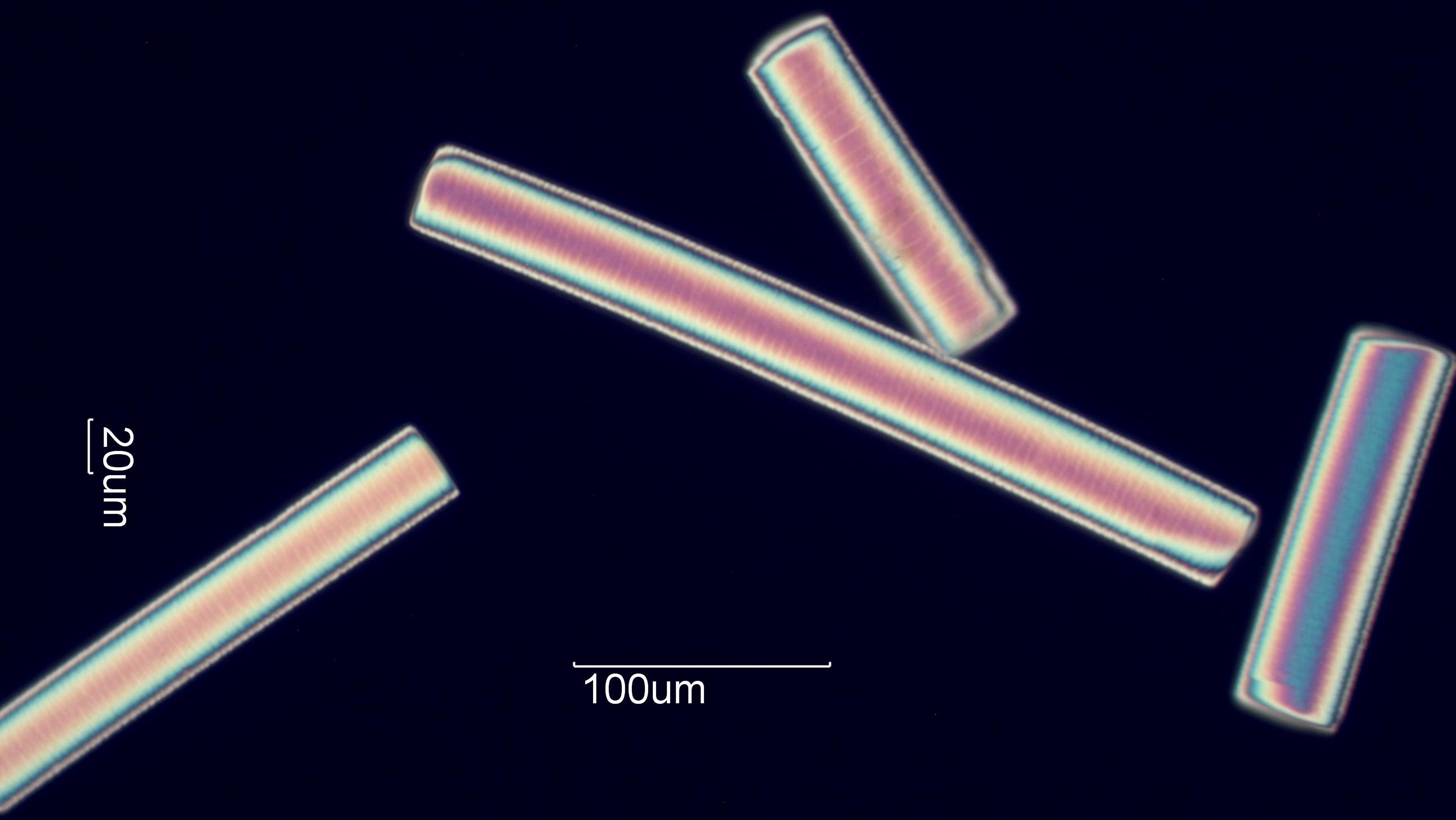Nylon Fiber, Sun Damaged
This is a sample nylon fiber that had been exposed to the summer sun for three months. The fiber had become powder. The transverse flaws are easily seen in the fibers imaged here.
Transmitted Off-Crossed Circular Polarized Light
DuPont Company Techinical Bulletin X-156: IDENTIFICATION OF FIBERS IN TEXTILE MATERIALS, December 1961.
http://en.wikipedia.org/wiki/Nylon
Definition/Function:
Nylon fiber is a polyamide fiber. It is formed by the careful combination of a diamine and a dicarboxylic acid or by a ring- opening polymerization. It is formed into a fiber by extruding the heated polymer through a spinneret. This results in the The fiber taking the cross-section of the spinneret. Nylon fiber can be round or any other desirable extruded shape.Significance in the Environment:
This is a common textile fiber used for clothing, carpets, curtains, and other applications of cloth. Exposure to ultraviolet light breaks polymer chains without significantly changing the orientation of the molecules or the distribution of the electrons, as is evident by the retention of the moderate to high birefringence. The tensile strength of the fiber has been lost.Characteristic Features:
Nylon fiber has a refractive index along its length of about 1.57 to 1.59 and perpendicular to its length of about 1.51 to 1.53. It has a birefringence of about 0.06 and a positive sign of elongation. It tends to exhibit a smooth, regular surface along its length depending on its cross-section of the fiber. Extreme shapes, such as the trilobate Type 1775, can result in an irregular appearance along the length as the fiber twists or bends.Associated Particles:
References:
Gorski, Azriel and Walter C. McCrone, "Birefringence of fibers", THE MICROSCOPE, vol. 46, no. 1, pp. 3-16DuPont Company Techinical Bulletin X-156: IDENTIFICATION OF FIBERS IN TEXTILE MATERIALS, December 1961.
http://en.wikipedia.org/wiki/Nylon


